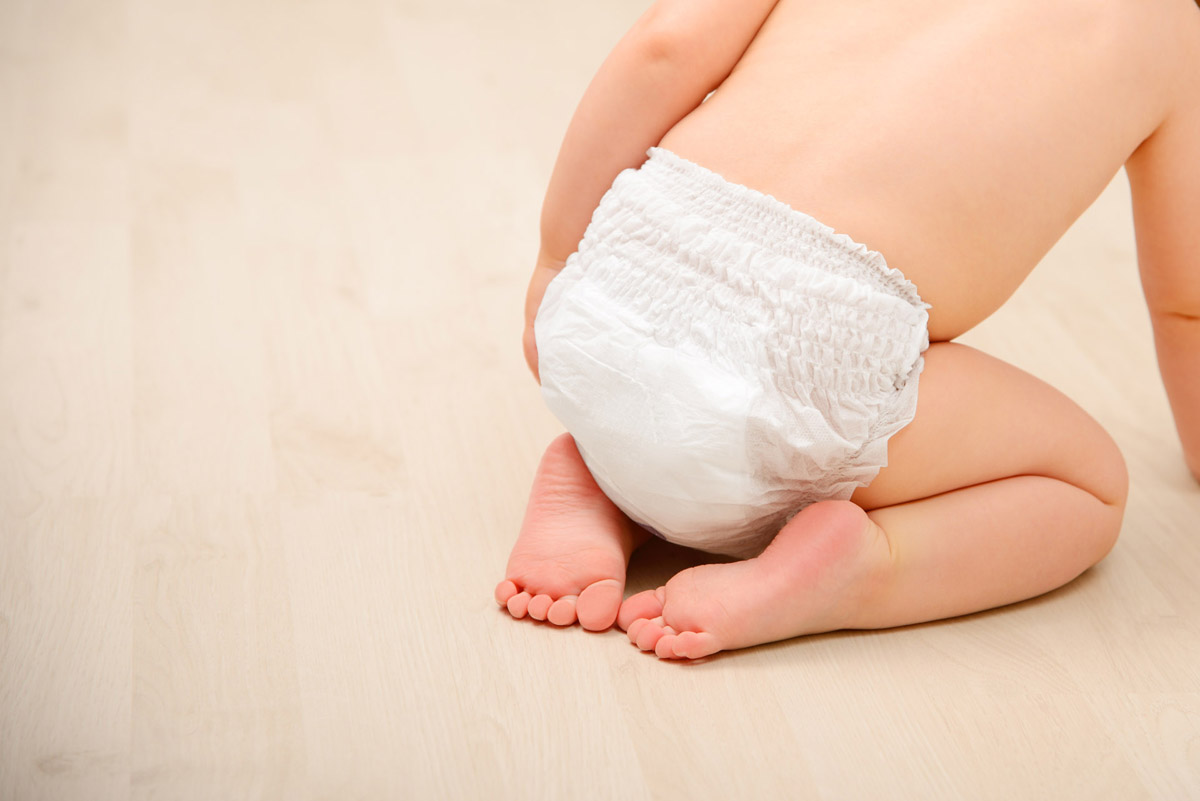Diaper rash is marked by red, swollen, hot to touch, tender-looking skin. Patches of dry, flaky skin may also develop in the diaper area. Also, your baby may seem more uncomfortable than usual, especially during diaper changes.

Diaper rash can happen when your baby’s sensitive skin stays in contact with urine and/or stool for a period of time. The skin becomes sore and red as urine changes its pH levels and this leads to bacteria and fungi growth with the moist atmosphere created. Also, Babies with sensitive skin can be allergic to some types of food, detergents, soaps, diapers, or baby wipes, causing diaper rash. The rash may also take place during teething and the process of shifting from breast to bottle feeding.

Diaper Rash appears in a variety of forms with distinct characteristics. Typically, a baby has only one type of Diaper Rash at a time.
• Normal Diaper Rash
It’s the most common type of diaper rash; usually it happens when the baby’s diaper area being in contact with urine & stool for a prolonged time or when the baby has diarrhea, the baby’s skin looks red and sore. Normal diaper rash should disappear within a few days of following the treatment tips and sometimes it disappears in just one day.
• Fungal Diaper Rash
This type of Diaper Rash is caused by yeast infection (Candida). This fungal infection thrives in warm, moist area such as baby’s bottom or skin creases. The fungal rash looks red, and often has small red spots around the edges. It is usually not painful. It can be caused or becomes worse when the baby is on antibiotics. A fungal rash is usually treated with an anti-fungal cream which your family doctor or pediatrician will need to prescribe.
• Bacterial Diaper Rash
A normal diaper rash can transform into bacterial rash when the baby’s skin has broken and an infection has developed due to bacteria entering the broken skin. Babies with bacterial rash are likely to have fever and show red spots or pimples. This type of diaper rash can be treated by antibiotics so your family doctor or pediatrician will prescribe the right antibiotic for your baby.
Keeping diaper area clean and dry:
change your baby’s diaper immediately after they become wet or soiled and clean the area gently with a soft cloth and warm water. You can use wipes but avoid wipes with alcohol. Be sure to pat - not scrub- the area dry. This reduces skin moisture which can lead to and/or inflame a rash.
Increasing airflow:
make sure the diaper isn’t wrapped too tight. Leave your baby few minutes without diaper during the day. This helps to keep the diaper area dry and fresh.
Apply a barrier cream:
Apply a cream containing zinc oxide such as Dewlin Diaper Rash Cream, with every diaper change to soothe the skin and prevent contact with feces and other irritants.
The best treatment for diaper rash is to keep your baby's skin as clean and dry as possible. If your baby's diaper rash persists despite home treatment, your doctor may prescribe: A mild hydrocortisone (steroid) cream. An antifungal cream, if your baby has a fungal infection.


 EN
EN
 FR
FR



